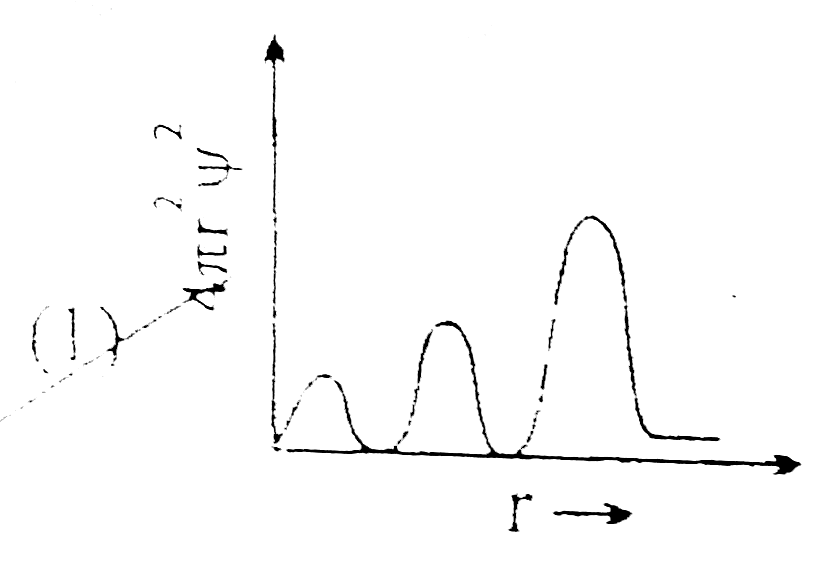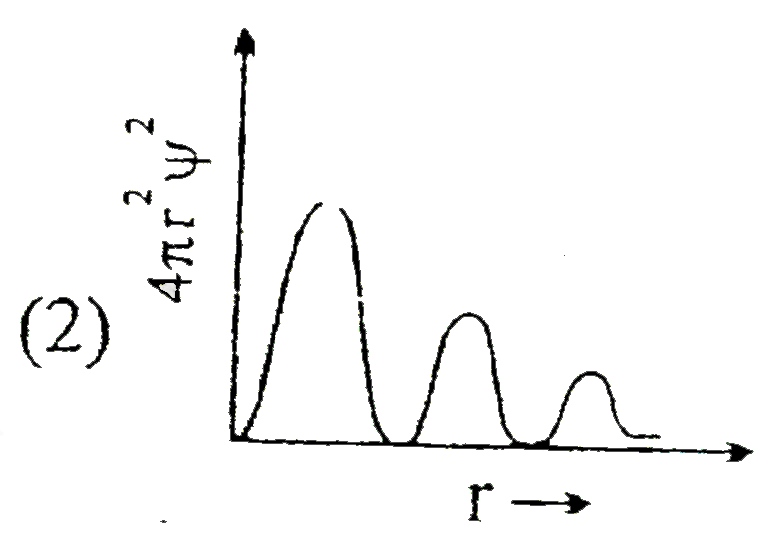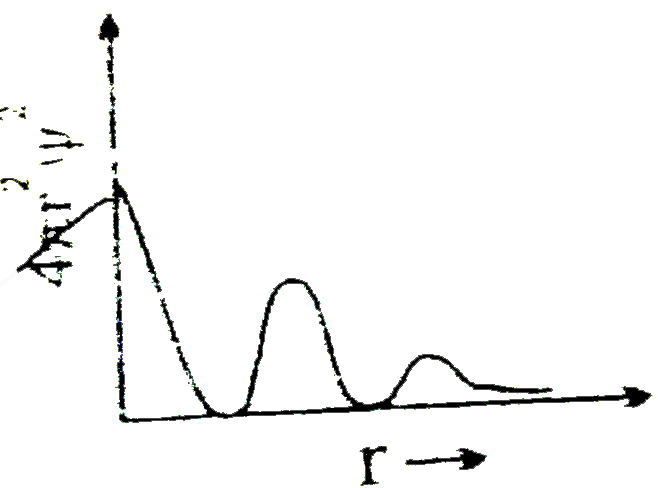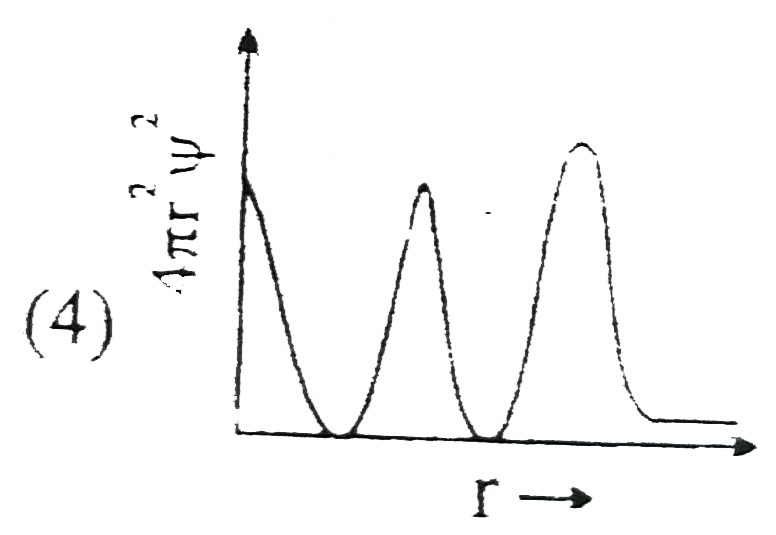Explore topic-wise InterviewSolutions in .
This section includes InterviewSolutions, each offering curated multiple-choice questions to sharpen your knowledge and support exam preparation. Choose a topic below to get started.
| 23401. |
Write the electronic configuration of (i) AC (Z = 89) (ii) Am (Z = 95) (iii) Lr (Z = 103) |
|
Answer» Solution :1) `Ac (Z = 89): "[Rn]" 5f^(0)6D^(1) 7s^(2)` (II) `Am (Z = 95): "[Rn]" 5f^(7)6d^(0) 7s^(2)` (III) `Lr (Z = 103): "[Rn]" 5f^(144)6d^(1) 7s^(2)` |
|
| 23402. |
What are amorphous solids ? Give four important differences between Crystalline and Amorphous solids. |
Answer» Solution : AMORPHOUS solids. These are the solids in which there is no definite ARRANGEMENT of CONSTITUENT PARTICLES. Difference between crystalline and amorphous solids are : 
|
|
| 23403. |
Which of the following molecule has odd e^(-) |
|
Answer» `ClO_(2)` |
|
| 23404. |
Which of the following is incorrect option ? {:(CuI_(2)+KI to K_(3)[CuI_(4)]),("complex salt"):} |
|
Answer» oxidation STATE of central ATOM decreases during the formation of complex. |
|
| 23405. |
Transition elements show magnetic moment due to spin and orbital motion of electrons. Which of the following metallic ions have almost same spin only magnetic moment ? |
|
Answer» `Co^(2+)` |
|
| 23406. |
Which of the following reactions gives a colloidal substance? |
| Answer» Answer :A | |
| 23407. |
Which of the following statements are correct concerning redox properties? (i) A metal M for which E^(@) for the half life reaction M^(n+)+n e^(-)hArrM is very negative will be a good reducing agent. (ii) The oxidizing power of the halogen decrease from chlorine to iodine. (iii) The reducing power of hydrogen halides increases from hydrogen chloride to hydrogen iodide. |
|
Answer» (i),(ii) and (iii) (ii) Reduction potentials of halogens are in the order: `Cl_(2) gt Br_(2) gt I_(2)`. thus, `Cl_(2)` is reduced most easily and hence is the best oxidizing agent. (iii) The size of the halide ions is in the order `Cl^(-) lt Br^(-) lt I^(-)`. greater the size of the halide ion, more easily it can lose electrons and get oxidized. Thus, `I^(-)` ions can be oxidized most easily and hene have the greatest reducing power. |
|
| 23408. |
To change the strength of 25 ml of 0.15 M HCl to 0.1 M the quantity of water that is to be added is |
|
Answer» 37.5 ml `0.15xx25=0.1V_(1)impliesV_(2)=37.5ml` WATER to be ADDED`=37.5-25=12.5ml` |
|
| 23409. |
What is meant by narrow spectrum antibiotics? |
| Answer» Solution :NARROW SPECTRUM ANTIBIOTICS are the antibiotics which are EFFECTIVE mainly against Gram-positive or Gram-negative bacteria. For example, Penicillin is effective only against diseases caused by COCCI and some gram positive bacteria. | |
| 23410. |
Which particleis used to bombard ""_(13)^(28)Al to give ""_(15)^(31)P and neutron ? |
|
Answer» PROTON |
|
| 23411. |
Write IUPAC names of the following compounds : |
|
Answer» Solution :The IUPAC names are : i) 3 - BROMO - 2 methylbut - 1 - ENE and II) 4 - Bromopent -2-ene. |
|
| 23412. |
Which one of the following is less basic in nature? |
| Answer» Solution :`Lu (OH)_(3)` | |
| 23413. |
Which of the following compounds is optically active ? |
|
Answer» `CH_3CHOHCOOH` |
|
| 23414. |
What is the solvent that we use in the acetylation of aniling using acetic anhydride ? |
|
Answer» |
|
| 23415. |
The vapour pressure of a liquid varies with temperature as log P=-A/T+I. The plot of |
|
Answer» LOG P against T will be a STRAIGHT LINE |
|
| 23416. |
What is the significance of Henry's Law constant K_(H) ? |
|
Answer» SOLUTION :Henry.s law is expressed mathematically as, `p=K_(H)X` (where, p is the PARTIAL pressure of the gas in vapour phase & X is the mole FRACTION of the gas in solution.) Thus it is significant from above equation that, ..higher the VALUE of Henry.s law constant `K_(H)` at a given pressure, the lower is the solubility of the gas in the liquid... |
|
| 23417. |
The splitting of the spectral lines under the influence of magnetic field is called |
|
Answer» ZEEMAN effect |
|
| 23418. |
When a quantity of electricity is passed through CuSO_(4) solution 0.16 g of copper gets deposited if the same quantity of electricity is passed through acidullated water, then the volume of H_(2) gasliberated at S.T.P. will be (Given at wt. of Cu=64) |
|
Answer» `4.0cm^(3)` `(0.18)/("Mass of" H_(2) "liberated")=(64//2)/(1)` or mass of `H_(2)` liberated `=(0.16)/(32)g=5xx10^(-3)g` `therefore` volume of `H_(2)` liberated at STP `=(22400)/(2)xx5xx10^(-3)cm^( 3)=56cm ^(3)` |
|
| 23419. |
Which of the following alkenes is most stable? |
|
Answer» `R_2C=CR_2` |
|
| 23420. |
Which equation gives relationship between rate-constant and tempeature ? |
|
Answer» OSTWALD's equation |
|
| 23421. |
What are the products formed when 2-butanone is oxidised by conc-HNO_3 ? |
|
Answer» `CH_3 - CH_2 - CH_2 - COOH` |
|
| 23422. |
Which of the following compounds is colourless |
|
Answer» `Cu_(2)(CH_(3)COO)_(4).2H_(2)O` |
|
| 23423. |
The tendency to form chains of identical atoms is known as .............. |
| Answer» SOLUTION :CATENATION | |
| 23424. |
Which of the following biomolecules contain non transition metal ion? |
|
Answer» vitamin `B_(12)` Vitamin `B_(12)`Co (TRANSITION METAL) ChlorophyllMg (non-transition metal ion) HaemoglobinFe (transition metal) INSULINS (non-metal) |
|
| 23425. |
Which of the given statements is INCORRECT about glycogen ? |
|
Answer» It is a straight CHAIN polymer similar to amylose |
|
| 23426. |
Which of the following is not a condensation polymer ? |
|
Answer» POLYSTYRENE |
|
| 23427. |
The solution of H_(2)SO_(4) of molarities x and y are mixed in the ratio of V_(1) mL : V_(2) mL of form a solution of molarity M_(1). If theyare mixed in the ratio of V_(2)mL : V_(1)mL , they form a solution of molarity M_(2). Given (V_(1))/(V_(2))gt 1 and (M_(1))/(M_(2))=(5)/(4), calculate the ratio x:y. |
|
Answer» Solution :`{:(,M_(1)'V_(1)'+M_(2)'V_(2)'=M_(3)'(V_(1)'V_(2)')),("In 1st case,",x xxV_(1)+y xx V_(2)=M_(1)(V_(1)+V_(2))"...(i)"),("In 2nd case, ", x xx V_(2)+y xxV_(1)=M_(2)(V_(1)+V_(2))"...(ii)"):}` DIVIDING eqn. (i) eqn. (ii), weget `(xV_(1)+yV_(2))/(xV_(2)+yV_(1))=(M_(1))/(M_(2))=(5)/(4)"GIVEN)"` `"or"4(xV_(1)+yV_(2))=5(xV_(2)+yV_(1))` `"or"4xV_(1)+4yV_(2)=5xV_(2)+5yV_(1)` `"or"(4x-5y)V_(1)=(5x-4y)V_(2)` `"or"(V_(1))/(V_(2))=(5x-4y)/(4x-5y)=(x)/(y)"(Given)"` `"or"((5x)/(y)-4)/((4x)/(y)-5)=(x)/(y)"(Dividing numerator and denominator by y)"` `"or"(5x)/(y)-4=(4x^(2))/(y^(2))-4(x)/(y)"or"(4x^(2))/(y^(2))-10(x)/(y)+4=0` `"Putting"(x)/(y)=z,4z^(2)-10z+4=0` `therefore""z=(-b pmsqrt(b^(2)-4ac))/(2a)=(10pmsqrt(100-64))/(8)=(10pm6)/(8)=(16)/(8)"or"(4)/(8)," i.e., 2 or "(1)/(2)` `"As"(x)/(y) gt 1," HENCE "(x)/(y)=2," i.e., " x:y = 2:1` |
|
| 23429. |
When ethyl methyl ether is reacted with cold conc. HI gives ethanol and methyl iodine. The reaction proceeding through |
|
Answer» `SN^1` |
|
| 23430. |
The two strands of DNA are not identical but are complementary. Explain. |
| Answer» Solution :The DNA has a double helix STRUCTURE. The two strands of DNA are held by the HYDROGEN BONDS between the bases on two strands. Thymine(T) pairs with ADENINE(A) through two hydrogen bonds and cytosine (C) pairs with guanine (G) through three hydrogen bonds. Thus, two strands are complementary to each other. | |
| 23431. |
Which one is correct for first order reaction. |
|
Answer» `t_(75%)/t_(50%)`=1.5 |
|
| 23432. |
What is plasticizer ? |
| Answer» Solution :Organic compounds which when ADDED to plastics MAKE than SOFT and workable are called plasticizers. For example , di-n-octylphthalate, cresyl triphosphate, ETC. | |
| 23433. |
Which of the following is a 3^@ - amine ? |
|
Answer» Teriethylamine |
|
| 23434. |
Which of the following is a appropriate set of reactants for the preparation of ethoxy benzene? |
|
Answer» |
|
| 23435. |
Which of the following ion is easily reduced |
|
Answer» `CE^(3+)` |
|
| 23436. |
Which of the following acts as a nucelphilic? |
|
Answer» `CI^(o-)` |
|
| 23437. |
Which of the following pairs is not correctly matched. |
|
Answer» ALLOTROPIC form of sulphur which is more stable at room temperature - RHOMBIC |
|
| 23438. |
Which of the following graph represents 3s orbital |
|
Answer»
No. of RADIAL nodes = 2 and height of MAXIMA INCREASES |
|
| 23439. |
Write the structures of the following compounds whose IUPAC names are given as under: (a) But-2-ene (b) 1,2,3-propantriol (c) Ethanoyl chloride (d) 2,3-pentadione (e) Octa-3,5-diene (f) 4-hydroxy-3-pentenoic acid (G) 2,3-dimethylbutan-2-ol (h) 2,2-dimethylpentanal (i) 2,7-dimethylocata-2,4,6-trience. |
|
Answer» (b) `CH_(2)OH-CHOH-CH_(2)OH` (C) `CH_(3)COCl` (d) `CH_(3)COCOCH_(2)CH_(3)` (e) `CH_(3)CH_(2)CH=CH-CH=CH-CH_(2)-CH_(3)` (f) `HOOC-CH_(2)-CH=C(OH)CH_(3)` (g) `CH_(3)-underset(CH_(3))underset(|)(CH)-underset(CH_(3))underset(|)OVERSET(OH)overset(|)(C)-CH_(3)` (h) `CH_(3)-CH_(2)-CH_(2)-C(CH_(3))_(2)` `(##GRB_ORG_CHM_P1_C03_E02_007_A01##)` (i) `(CH_(3))_(2)-C=CH-CH=CH-CH=C(CH_(3))_(2)` (i) `(CH_(3))_(2)-C=CH-CH=CH-CH=C(CH_(3))_(2)` |
|
| 23440. |
Which of the following hydroxide is more ionic and more basic in nature ? |
| Answer» Answer :A | |
| 23441. |
Which of the following statements is not true for Mohr.s salt? |
|
Answer» It DECOLOURISES `KMnO_4` solution |
|
| 23442. |
What are the uses of a lead accumulator ? |
| Answer» Solution :A lead ACCUMULATOR is used (1) In automobiles for the supplyof electric current (2) in the LABORATORIES as a D.C. supply (3) in telephone and TELEGRAPH systems (4) also in invertors. | |
| 23443. |
Which xylene is most easily sulphonated |
|
Answer» <P>Ortho  m-xylene is most EASILY sulphonated because o and p both POSITIONS are free with respect to methyl group |
|
| 23444. |
What is the difference between bathing soap and washing soap ? |
| Answer» Solution :Bathing SOAPS are potassium SALTS of long CHAIN FATTY acids while washing soaps are SODIUM salts of long chain fatty acids. | |
| 23445. |
Which of the following complex is optically inactive |
|
Answer» `[RhCl(CO)(PPh_(3))(NH_(3))]` |
|
| 23446. |
Which one of the enzyme is produced in liver to detoxify the alcohol? |
|
Answer» DIASTASE |
|
| 23447. |
Which of the following oxocation is not possible |
|
Answer» `PuO_(2)^(+)` |
|
| 23448. |
What type of battery is dry cell ? Write overall reaction occurring in dry cell. |
| Answer» SOLUTION :PRIMARY CELL. | |
| 23449. |
Whichof the followinghas highestpkbvalue . |
|
Answer»
|
|
| 23450. |
Which of the following is a lanthanide ? |
|
Answer» Ta |
|








